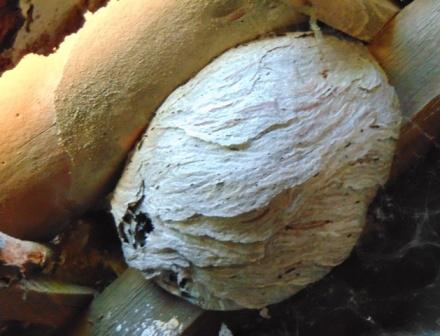Wasps are very recognizable by their dangerous -looking yellow black striped pattern and their wasp waist.
Their poison contains pheromones by which other wasps, possibly in the neighborhood, can be recruited.
Wasps hunt primarily on insects. They also eat sweet fruit.
 They hate the smell of cloves.
They hate the smell of cloves.
When a wasp stings you do vinegar on the sting site to neutralize the poison.
Rub your bee or wasp sting with fresh petals of marigold.
A wasp scatters 1.5 insects per hour. An average nest of 5000 wasps thus keeps 80,000 mosquitoes and flies out of the air every day. Aphids, grasshoppers and caterpillars are also on the menu. In addition, they are also traditional pollinators for flowers. So useful animals. You have to leave them quite, they are very defensive when they feel threatened.
European hornet (Vespa crabro)
European hornets are distinct in that they are approximately 2x larger than other wasps and by the reddish-brown color on head, thorax and legs. Other wasps are there black or yellow. The European hornet is the largest social wasp in Europe. The Queen may be 40 mm long. The workers are 18-25 mm long and males 21-28 mm. They are also especially insects hunters.
Asian hornet now also in Flanders
In 2017 a nest of the Asian hornet (Vespa velutina) was discovered in Flanders, an foreign wasp that threatens our honey bees.
The European hornet is a lot bigger and wider than this exotic and has the Belgian tricolor: black and yellow, with striking red legs, lots of red at the head and on the bust. The Asian hornet has no red. It is almost completely black, and the legs have yellow ends.
After reading that hornets, and other wasps, are very territorial and will not build nests anywhere near each other, Sandy Davis had the idea to crochet a wasp nest look-alive to trick the hornets into thinking others already lived there. She hung it up and hasn’t had “a single one since 4 years.” Meanwhile there are already fake nests for sale.

